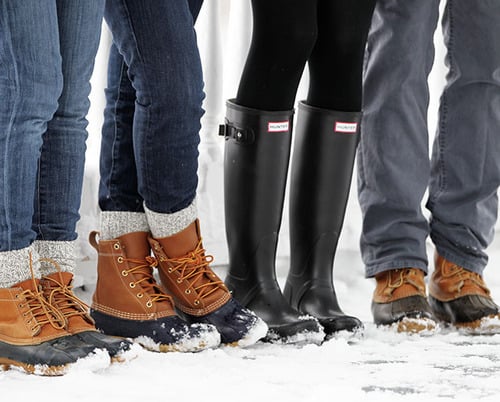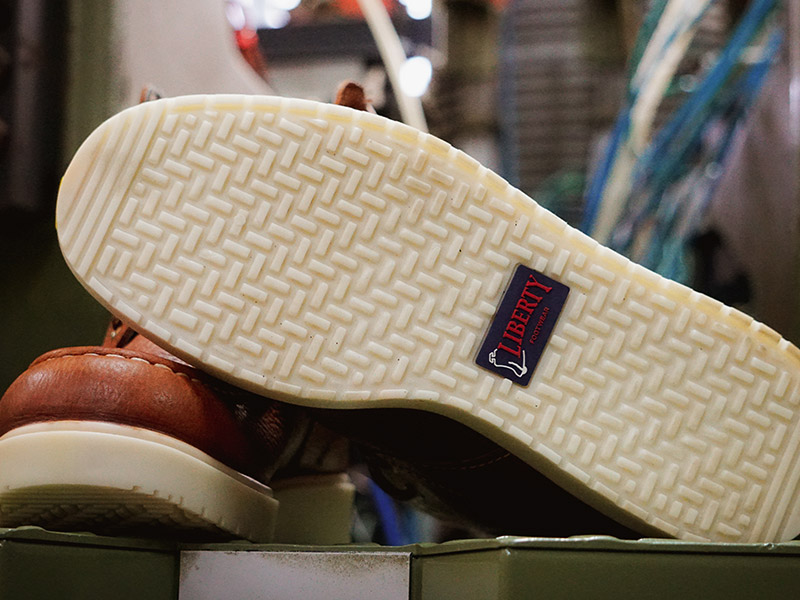The Importance of Choosing the Right Work Boots for the Winter
Working in cold weather presents unique challenges that demand specific gear, especially when it comes to footwear. The impact of cold temperatures on comfort, safety, and productivity is undeniable. Selecting the appropriate work boots for the winter becomes paramount. It ensures workers can perform their duties effectively and safely in harsh winter conditions. The dangers of cold feet should not be underestimated; prolonged exposure can lead to frostbite, a severe condition that can have lasting consequences. Choosing the right insulated work boots is not just about comfort; it is a matter of health and safety. These boots are specifically designed to provide the necessary protection against the elements. They allow workers to remain focused on their tasks without the distraction and discomfort of frozen feet.
Properly designed work boots for the winter provide essential warmth and insulation. This is crucial to maintain body temperature, preventing cold-related injuries. A good pair of insulated work boots will also incorporate waterproof features. This is very important because wet feet dramatically increase the risk of cold injuries. These boots also come equipped with slip-resistant outsoles. These improve traction on icy or snowy surfaces, reducing the risk of slips and falls. These are crucial safety features. Investing in quality work boots for the winter is a proactive measure that allows workers to handle any task efficiently and safely. It is an investment in comfort and safety that pays off in performance.
Key Features of Top-Rated Winter Work Boots
Selecting the right work boots for the winter involves understanding the critical features that ensure warmth, safety, and comfort. Insulation is paramount; materials like Thinsulate and fleece are frequently used for their excellent heat retention capabilities. These materials trap air, forming a barrier against the cold. Waterproof membranes, such as Gore-Tex, are essential to keep feet dry, preventing the discomfort and hazards of moisture buildup. These membranes allow vapor to escape while blocking external water. The effectiveness of work boots for the winter greatly relies on these key elements.
Slip-resistant outsoles are another key consideration for winter work boots. Rubber compounds with aggressive treads offer the necessary traction on icy and snowy surfaces. This feature minimizes the risk of falls and injuries, vital in hazardous winter conditions. The materials used in the boots’ construction are also crucial. Full-grain leather is a common choice for its durability and ability to withstand freezing temperatures. Specialized synthetics also offer similar benefits and can be lighter. Each of these features works together to provide a secure and comfortable experience while working in harsh conditions. The best work boots for the winter will integrate these features.
Understanding how these components contribute to the overall performance of work boots for the winter is very important. Insulation keeps the foot warm, preventing cold-related injuries such as frostbite. Waterproofing maintains dry conditions, preventing discomfort and reducing the risk of blisters. Slip-resistant outsoles provide stability and reduce accidents. Durable materials ensure the boots can handle the rigors of winter work, promoting long-term use. Therefore, these combined features form a comprehensive design to help people work safely and efficiently through the coldest months. Choosing the right work boots for the winter is an investment in your health and productivity during winter.
Comparing Popular Brands: Carhartt, Timberland, and Keen
When the need for reliable work boots for the winter arises, several brands stand out for their reputation and quality. Carhartt, Timberland, and Keen are three such brands, each offering unique strengths and features that cater to different preferences and job requirements. Carhartt work boots are known for their rugged durability and no-nonsense construction, often favored by those in heavy-duty industries. Their winter models typically emphasize robust insulation and sturdy outsoles, built to withstand harsh conditions. These work boots are designed to handle demanding work sites and provide lasting protection against the cold and elements. Timberland, on the other hand, blends classic design with modern technology. Timberland’s winter work boots often feature waterproof membranes and premium leather uppers, providing both style and reliable protection. They are a popular choice for those who need a balance of performance and aesthetic appeal. They also incorporate comfort features such as anti-fatigue footbeds, making them suitable for long hours of wear. Keen work boots are recognized for their innovative designs and focus on comfort. They incorporate features like asymmetrical toe protection and supportive midsoles that offer long lasting comfort and injury prevention. Keen’s winter models often prioritize flexibility and lightweight construction without sacrificing warmth and water protection. This makes them a good choice for those who need agility in their work and prefer a less bulky boot.
Each brand offers distinct approaches to winter work boot design. Carhartt’s work boots prioritize ultimate toughness and resistance to extreme conditions. Timberland integrates classic aesthetics with practical winter features. Keen focuses on innovative design and comfortable wear. For example, when comparing specific models, Carhartt’s insulated work boots are often equipped with heavy-duty insulation like Thinsulate. This provides superior warmth in freezing conditions. Timberland’s popular models often feature waterproof leather and sealed seams. This ensures feet stay dry in wet environments. Keen’s winter work boots are commonly made with lightweight yet supportive materials and have flexible midsoles. This makes them ideal for tasks requiring a lot of movement. Understanding these differences is important to select the best work boots for the winter, specifically suited for the demands of your work environment and personal preferences. Choosing between these brands often comes down to individual needs and priorities. Whether ruggedness, style, or comfort are the key factors, each brand offers solid options to navigate the winter season.
The Role of Socks: Maximizing Warmth and Comfort
The selection of socks is paramount when aiming to maximize the effectiveness of work boots for the winter. Socks play a critical, yet sometimes overlooked role, in keeping feet warm and dry. The material of your socks directly influences moisture management within your boots. Cotton socks, for example, are not recommended for winter conditions. They tend to absorb moisture, such as sweat, which can lead to cold feet and discomfort. Instead, prioritize materials like merino wool or synthetic blends. These fabrics wick away moisture, keeping feet dry and warm, which is especially important when wearing work boots for extended periods. The thickness of your socks also contributes to overall warmth. Consider layering thinner socks under thicker ones to improve insulation in extremely cold conditions. This approach also creates an air pocket between the layers, further enhancing the insulating properties. Always ensure that socks fit well and do not cause discomfort or restrict blood flow, as this could negatively affect the performance of even the best insulated work boots.
Proper sock selection goes beyond just choosing the right material. The design and fit of socks also influence how well work boots for the winter perform. Seamless socks, for example, can reduce the risk of blisters, especially during long shifts. Socks with reinforced heels and toes can provide additional cushioning, which is essential for comfort and support. For those working outdoors in very low temperatures, consider using thermal socks specifically designed for extreme cold. These socks often feature additional insulation and moisture-wicking properties, further enhancing the warmth and comfort inside winter work boots. Taking time to select the appropriate socks can significantly improve overall foot health and prevent discomfort from cold and moisture. This can enhance the overall comfort and performance provided by the work boots.
In conclusion, the right socks are as crucial as the work boots themselves for optimal performance. A good pair of work boots for the winter paired with the wrong socks can lead to cold, uncomfortable feet. Conversely, even modest work boots can be improved with the right socks. Consider sock materials, thickness, and layering techniques to keep feet warm and dry. By taking these steps you can ensure maximum performance and comfort during winter work conditions. Remember, proper sock selection and usage is a fundamental component of maintaining foot health and overall comfort in cold climates when using work boots.
Maintaining Your Winter Boots for Longevity
Proper maintenance of work boots for the winter is crucial for extending their lifespan and ensuring continued performance. Winter conditions, with their snow, salt, and mud, can take a toll on even the most durable footwear. Cleaning your work boots regularly is the first step in this process. After each use, remove any excess snow or dirt with a soft brush or cloth. Pay close attention to areas where salt tends to accumulate, as salt can be highly corrosive to both leather and synthetic materials. To remove stubborn dirt or salt residue, a mild soap solution can be used. Avoid using harsh chemicals or excessive amounts of water, which can damage the boots.
For leather work boots, conditioning is vital to prevent cracking and maintain suppleness. Apply a leather balm or conditioner regularly, following the manufacturer’s instructions. These products help to moisturize the leather, keeping it flexible and resistant to the harsh elements of winter. Ensure that the conditioner is applied evenly and allow it to soak into the leather before putting the boots away. When not in use, store your work boots for the winter in a cool, dry place away from direct sunlight or heat sources. Stuffing them with newspaper or using shoe trees can help maintain their shape and prevent creases. Using a shoe dryer can also be very effective, especially after a day of heavy snow or rain. This helps to quickly dry the boots, preventing the growth of mold and mildew which could affect the lifespan and performance of the work boots for the winter.
Proper care will not only make your winter work boots last longer, but it will also ensure that they continue to provide the necessary warmth, comfort, and safety. By following these maintenance tips, you can protect your investment and face any winter work challenge with confidence. Ignoring these maintenance steps could significantly decrease the life of your work boots for the winter and lead to discomfort and increased expenditure in the long run.
Real-World Scenarios: Choosing the Right Boot for the Job
Selecting the right work boots for the winter depends heavily on the specific job and working environment. For construction workers, who often face varied conditions, durable and highly insulated work boots are essential. These boots should have a robust waterproof membrane, such as Gore-Tex, to keep feet dry when working in snow or mud. Look for aggressive, slip-resistant outsoles to provide superior traction on icy or uneven surfaces. Ample insulation, like Thinsulate, will help to combat the cold while working outdoors for prolonged periods. Steel or composite toe protection might be required depending on safety regulations on site.
In contrast, agricultural workers, such as farmers, may prioritize different features in their winter work boots. For those working in fields or animal barns, waterproof and muck-resistant boots are crucial. They may not need the steel toe that construction workers use but will need similar slip-resistant outsoles. Quick-drying linings and the ability to repel manure and moisture will be very important. A lighter weight boot with good insulation will help to reduce fatigue throughout the workday. For delivery drivers who spend time in and out of their vehicles, flexibility and comfort are paramount. They might also consider work boots that have less insulation but still offer excellent traction and water resistance. A work boot for the winter should allow for easy movement and also protect against the elements.
Indoor workers who also experience colder environments such as unheated warehouses will benefit from insulated work boots that maintain warmth, with adequate support for long hours on their feet. They may not need heavy-duty outsoles, but should prioritize comfort, insulation, and a slip-resistant sole for added safety. The perfect work boots for the winter must provide the right features to support the kind of work performed each day, ensuring both safety and comfort. Consider specific requirements for each job to choose the perfect fit. The best winter work boots should always be chosen based on the environment and type of tasks required.
User Reviews: What Workers Say About These Boots
Real-world feedback offers invaluable insights into the performance of work boots for the winter. Examining user reviews provides a practical understanding beyond manufacturer specifications. Many users have praised Carhartt’s rugged models, highlighting their durability in demanding conditions. One construction worker mentioned that Carhartt boots kept their feet warm and dry through long hours on snowy sites. Another user appreciated the robust build and protective toe cap, which are crucial for heavy-duty tasks. Such reviews underscore the brand’s commitment to producing hardy winter work boots. Similarly, Timberland receives acclaim for its classic style combined with reliable performance. Several reviewers appreciate the waterproof features, which ensure dry feet in slushy and wet conditions. Some users have pointed out that Timberland boots offer a good balance between comfort and protection making them suitable for moderate winter conditions. However, some have mentioned that their outsoles may not be as aggressive as Carhartt’s, making them less ideal for icy surfaces. Keen boots, known for their comfort-oriented designs, often receive praise for their fit and cushioning. Workers who spend many hours on their feet appreciate the ample toe box and supportive insoles that reduce fatigue. A delivery driver noted that Keen’s insulation kept their feet cozy during long shifts, without overheating. While Keen might not offer the same level of ruggedness as Carhartt, their focus on comfort makes them a popular choice for individuals working long hours in less demanding environments.
Specific comments often reveal crucial details. One reviewer of Carhartt boots, mentioned the superior grip they provide on icy surfaces. This is a vital consideration for anyone working outdoors in winter. A Timberland user discussed how the waterproof membrane effectively kept their feet dry during unexpected snow storms. Another review of Keen boots highlighted that they were comfortable right out of the box without any break-in period required. These real user testimonials provide a comprehensive view of the performance of these work boots for the winter. User experiences collectively validate each brand’s unique strengths and help potential buyers make informed decisions. They emphasize that choosing the right work boots for the winter should consider the specific job and the environment, as well as personal preferences for comfort and fit. These examples highlight the necessity of paying attention to user reviews when choosing work boots for the winter, to make sure that the chosen footwear will be suitable for their daily tasks.
Investing in Your Safety and Comfort This Winter Season
Selecting the correct work boots for the winter is a crucial investment for any professional facing cold and challenging conditions. The consequences of inadequate footwear can range from discomfort to serious health risks like frostbite. Prioritizing quality insulated work boots is not just about comfort; it’s about ensuring safety and maintaining productivity throughout the winter months. When choosing your next pair of work boots for the winter, consider key elements such as the insulation type, whether it’s Thinsulate or fleece, which directly impacts warmth. Another essential feature is a waterproof membrane like Gore-Tex. This is critical for keeping feet dry in wet and snowy conditions. The outsole must be slip-resistant, with a robust rubber compound and aggressive tread to provide stability on icy surfaces. Materials also matter, with full-grain leather and specialized synthetics offering durability and weather protection in freezing temperatures. These features collectively will contribute to overall safety and comfort while on the job.
The perfect work boots for the winter should match the demands of your specific work environment. Construction workers might require boots with enhanced ankle support and extra insulation for prolonged exposure to the elements. Delivery drivers may prioritize boots that are lightweight and flexible, but still offer ample insulation and slip-resistance. Farm workers may need boots designed to withstand mud and extreme cold. Investing in high-quality work boots for the winter ensures that you are well-equipped for whatever challenges the season brings. Always consider your specific needs and the conditions you will be working in. Proper work boots for the winter will protect you from the elements and allow you to focus on your job safely and effectively.
Ultimately, choosing the right work boots for the winter is a decision that directly impacts both your comfort and your safety. This decision should not be taken lightly, since it can have a large impact on your productivity and health. Before settling on a purchase, review all of your options and consider if the boot you are looking at has the key attributes for winter work. Make sure to select the correct work boots for the winter. Consider checking prices on retailer websites to ensure you are getting the best deal. This important investment will pay off throughout the cold season, allowing you to work safely and comfortably. It will also increase productivity and ensure better outcomes, in a safe manner for the whole winter season.




